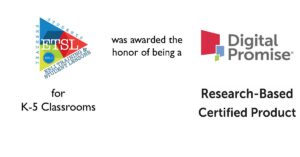There has been much buzz, discussion, and debate around phonological and phonemic awareness instruction lately. Is instruction with larger units such as syllables and onset-rime necessary? Can emerging readers start at the phoneme or sound level? Should this be taught to students 2nd grade and older? Should instruction include letters, manipulatives, just auditory or some/all of the above? Following this makes my head spin – even though over the past 23 years I’ve successfully taught phonemic awareness to thousands of teachers and thousands of beginning and struggling learners! In this blog, I will discuss this topic and in the webinar that accompanies it I’ll show you how to effectively and efficiently teach phonemic awareness to your students. Hopefully this will help clear up some of the confusion!
ACCELERATING PHONEMIC AWARENESS
To start, what exactly is phonemic awareness and phonological awareness? Phonemic awareness is the ability to identify and manipulate individual sounds, also called phonemes. Phonological awareness is the ability to identify and manipulate spoken parts of words; this could include syllables or onset-rime. Onset can include blends or a cluster of 2-3 consonant sounds and rime is the string of letters or sounds that follow the onset. For example, in ‘string’, the ‘str’ would be the onset and ‘ing’ the rime. Because research shows that manipulating individual sounds is more beneficial to accelerating reading progress than manipulating word parts, and because we’ve only taught phonemic awareness in EBLI instruction, this blog and the webinar that accompanies it will focus only on phonemic awareness instruction, not phonological awareness.
Since the 1940s it has been understood that isolating sounds in words, then matching the letter(s) that represent those sounds, is imperative in reading and spelling instruction. The ability to access the sounds (segmenting), accurately match the spellings that represent those sounds (phonics), and put the sounds together to make the word (blending) are significant factors leading to successful reading and spelling. Research on the importance of phonemic awareness and phonological awareness intensified in the 60s and 70s.
For more than 2 decades, EBLI student instruction and teacher training has explicitly taught and incorporated the phonemic awareness skills of blending, segmenting, and phoneme manipulation. Blending is pushing separated sounds together. This entails saying the sounds in a word (/s/ /t/ /o/ /p/ or /v/ /ai/ /r/ /ee/) and blending them into the word (‘stop’ or ‘very’). Segmenting is the opposite which is saying the word first and then pulling the sounds apart. If a student is told the word ‘climb’, they would say the sounds /c/ /l/ /i/ /m/. For the word ‘was’, they would say /w/ /u/ /z/. Phoneme manipulation is moving sounds around in words. This includes deleting a sound (what is ‘twin’ without the /t/? ‘win’) or substituting a sound (say ‘slap’, now change the /p/ to /m/ – ‘slam’).

Blending and segmenting can be done with or without letters, embedded into instruction from the outset. The advanced phonemic awareness skills of deletion and substitution are also embedded in many EBLI activities. However, because they are more challenging to master, they are also taught using separate, focused activities. For Kindergarten, we introduce these phonemic awareness skills in whole class instruction and also provide extended practice and error correction in small groups for students who need it. You can learn how to teach this process in the EBLI Accelerate Phonemic Awareness Acquisition webinar.





